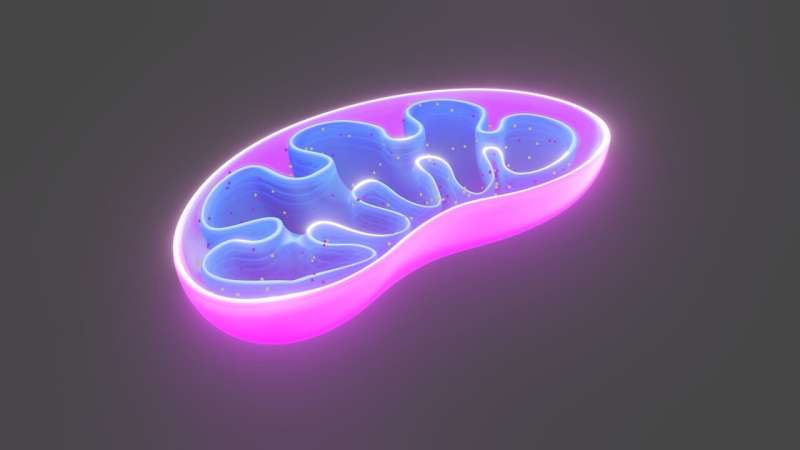This article has been reviewed according to Science X's editorial process and policies. Editors have highlighted the following attributes while ensuring the content's credibility:
fact-checked
peer-reviewed publication
trusted source
proofread
Mitochondrial ultrastructure is regulated by calcium sensor, scientists discover

Calcium homeostasis, involving the flow of calcium ions within cells, is essential for cell signaling and function. Importantly, calcium enters the cellular powerplants known as mitochondria, where it fine tunes energy production. Now, new research at the Lewis Katz School of Medicine at Temple University shows that, when it comes to mitochondria, calcium has another, vital function—serving as a regulator of mitochondrial ultrastructure.
The new research, published in the journal Science Signaling, is the first to show that mitochondrial ultrastructure is regulated by the calcium-binding protein MICU1. MICU1 is necessary for function of the mitochondrial contact site and cristae organizing system (MICOS), which governs the structure of the inner and outer mitochondrial membranes. The tightly orchestrated interactions between calcium, MICU1, and MICOS are critical for modulating cellular energetics and cell death.
"We knew from previous work that MICU1 binds and regulates MCU, the main calcium transporter in mitochondria, and that deletion of the MICU1 gene disrupts mitochondrial structure," explained John W. Elrod, Ph.D., Director of the Cardiovascular Research Center at the Katz School of Medicine and senior investigator on the new study.
"Dhanendra Tomar, first author on the study, discovered that when MCU is deleted, MICU1 still forms high-molecular weight complexes. This suggested to us that MICU1 was binding and doing something other than regulating calcium uptake through the MCU channel."
To investigate the possibility of a second function for MICU1 in mitochondria, Dr. Elrod and colleagues used an approach known as proximity biotinylation, in which they fused biotin ligase to MICU1 protein molecules. In this system, any protein that came into very close contact with MICU1 became labeled with biotin.
The research team then expressed the MICU1-biotin ligase fusion protein in cells lacking MCU to isolate and identify MICU1 binding partners that were not associated with its canonical role of interacting with the mitochondrial calcium uniporter channel.
Surprisingly, the researchers found that two components of the MICOS complex strongly interacted with MICU1.
"MICOS is primarily responsible for dictating the structure of the inner and outer mitochondrial membranes, including the folding of the inner membrane into cristae," Dr. Elrod said.
Cristae serve an important role in regulating several mitochondrial functions, including the electron transport chain, bioenergetics, and cell death.
The study provides a framework to understand calcium signaling at the mitochondrial membrane versus the internal space, or matrix, of the mitochondria. The new findings also cast light on the cell signaling pathways that underlie mitochondrial remodeling, which is a common feature of disease.
"Numerous diseases are impacted by mitochondrial ultrastructure, and some MICOS components are altered in cardiovascular disease, such as heart failure," Dr. Elrod added.
While leveraging understanding of MICU1 and MICOS for the development of new therapies is a long way off, insight into interactions between these components forms a necessary foundation for drug discovery.
More information: Dhanendra Tomar et al, MICU1 regulates mitochondrial cristae structure and function independently of the mitochondrial Ca2+ uniporter channel, Science Signaling (2023). DOI: 10.1126/scisignal.abi8948
Journal information: Science Signaling
Provided by Temple University





















